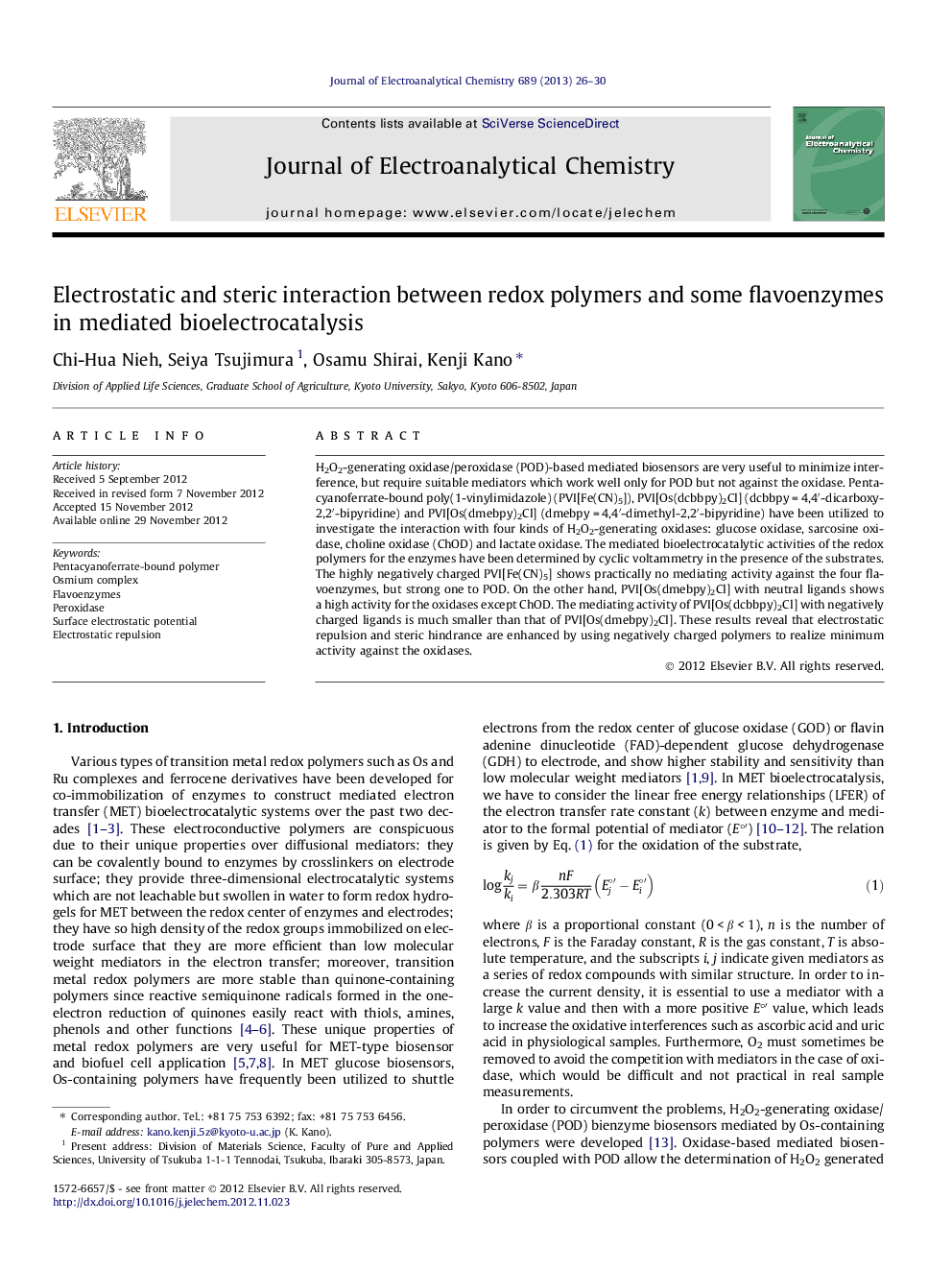| Article ID | Journal | Published Year | Pages | File Type |
|---|---|---|---|---|
| 219145 | Journal of Electroanalytical Chemistry | 2013 | 5 Pages |
H2O2-generating oxidase/peroxidase (POD)-based mediated biosensors are very useful to minimize interference, but require suitable mediators which work well only for POD but not against the oxidase. Pentacyanoferrate-bound poly(1-vinylimidazole) (PVI[Fe(CN)5]), PVI[Os(dcbbpy)2Cl] (dcbbpy = 4,4′-dicarboxy-2,2′-bipyridine) and PVI[Os(dmebpy)2Cl] (dmebpy = 4,4′-dimethyl-2,2′-bipyridine) have been utilized to investigate the interaction with four kinds of H2O2-generating oxidases: glucose oxidase, sarcosine oxidase, choline oxidase (ChOD) and lactate oxidase. The mediated bioelectrocatalytic activities of the redox polymers for the enzymes have been determined by cyclic voltammetry in the presence of the substrates. The highly negatively charged PVI[Fe(CN)5] shows practically no mediating activity against the four flavoenzymes, but strong one to POD. On the other hand, PVI[Os(dmebpy)2Cl] with neutral ligands shows a high activity for the oxidases except ChOD. The mediating activity of PVI[Os(dcbbpy)2Cl] with negatively charged ligands is much smaller than that of PVI[Os(dmebpy)2Cl]. These results reveal that electrostatic repulsion and steric hindrance are enhanced by using negatively charged polymers to realize minimum activity against the oxidases.
► The electrostatic interaction between polymers and flavoenzymes are evidenced. ► Steric hindrance plays an important role in some redox polymer–enzyme interactions. ► PVI[Fe(CN)5] is an excellent mediator for oxidase/peroxidase-based biosensors.
